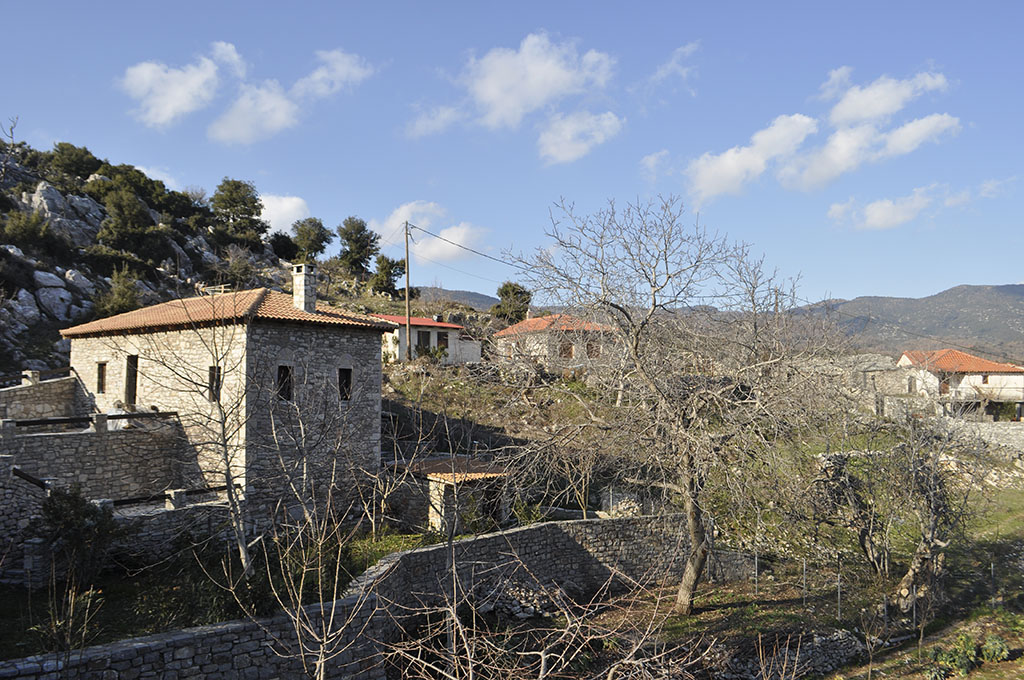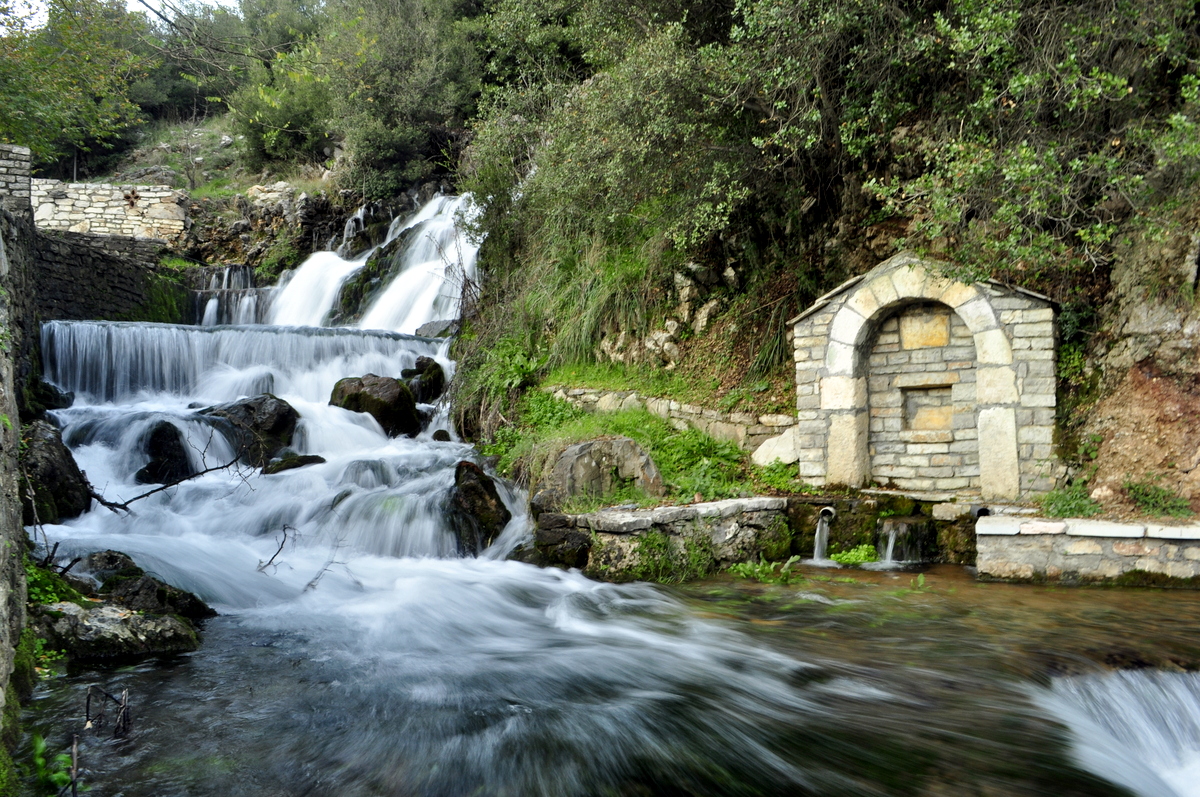Project Description
6. Trail of Freedom
Abeliona - Petra - Neda Springs - Kakaletri - Eira
The trail connects the beautiful village of Abelionas with ancient Eira, where in the 6th century BC. the Messinians fought for their freedom against the Lacedaemonians. For the modern hiker, of course, freedom is to be able to enjoy every step of the way, without thinking about the past or the future. To be able to make this meditative journey in time. It is freedom to walk and not to think.

Details
| 10.3 km | 4h 15‘ | 3/5 |
Starting point: Abeliona
Ending poind: Eira
Main sights: Abeliona, Neda Springs, Eira
Connected to: 5. Trail of Bliss, 7. Trail of Joy
Trail description
The route starts from Abeliona and goes down a nice cobbled path to Tritseli fountain. It goes uphill, under deep mixed forest, to the neck in the Saraniva region, and then down the path to the Petric spring of Variko. The spot is ideal for a short stop under the shade of perennial plane trees. Then the route goes to Petra village (formerly called Delga).
From there, the route continues, offering two options: crossing the village or going straight to the Neda fountains, through old trails.
The fountains of Neda are located a few hundred meters further down from Petra, next to the church of St. Anastasia. The water gushes through the rocks, abundantly, all year round.
The route crosses the river, and reaches a plateau with two churches (Panagia and Agios Georgios), a stone bridge and an old watermill. There, the hiker has the option of walking to Neda. The route continues on a mild dirt road, overlooking the Karamicha ravine and watermill, and after crossing cultivated fields and old, abandoned farmhouses, it ends a few hundred meters to the asphalt.
Leaving the asphalt, a path leads to the Church of the Life-giving Source of Kakaletri, in a particularly beautiful setting under the rich shade of plane trees and with the river flowing – an ideal resting place. A few meters of asphalt, and again the route uses old, stone-built paths to the settlement of Kakaletri.
At Kakaletri, a small uphill cement road leads to the old, stone-built path to ancient Iera. The trail is uphill, but offers stunning views of the Neda Valley, the Vigla peak and the surrounding mountains. In its last steps, it enters the archaeological site probably from some pylon of the city’s outer walls. Reaching the top, the view from the church of Agios Athanasios is unrestricted in all directions. A few meters above, on the natural top of the hill, are the remains of ancient walls.
Sightseeing spots
Abeliona
Built on the notorious crossroads of three counties, Arcadia, Ilias and Messinia, Abeliona is a traditional mountain village surrounded by chestnut forests and innumerable natural springs. Cobblestone streets and old stone houses, hiding images, sounds and scents from another era, reveal themselves for a moment, before the fresh, mountainous air drifts away. A place that turns simple daily delights, into unique experiences that you want to experience again.
Neda Springs
Neda is thought to originate from this point, although the waters of all the rivers and streams that precede it end here. During the summer months when the aquifer is lowered, the waters gush from the bottom of the small lake. In the winter, however, they spill over, dramatically foaming with a loud noise from a slit in the rock. The small lake of springs was formerly called the “Karamicha aisle” because its waters fed the Karamicha watermill, which is preserved in good condition about 100 meters below the river. Next to the fountains you will see the picturesque Church of St. Anastasia.
This is usually where the two-day Neda Crossing adventure begins, organized by local clubs each summer. This is a path of great interest, but very difficult and dangerous. Don’t try it yourself.
Eira
On the hill, south of the village of Kakaletri, are the ruins of the ancient Messinian city of eIra, overlooking the lush valley of Neda and the much higher peak of Vigla.
Eira was the last stronghold of the Messinians in their long struggle for independence against the Lacedaemonians. The Messinians, led by their legendary leader Aristomenis, defended Eira for 10 whole years. They fell into the 11th year, at the end of the 6th or the beginning of the 5th century BC, and were forced to leave their homeland. They immigrated to Sicily and founded the city of Messina (today’s Italian city of Messina). They returned many years later, when Thebes with Epaminondas defeated and humiliated the Lacedaemonians at Lefktra (371 BC).




